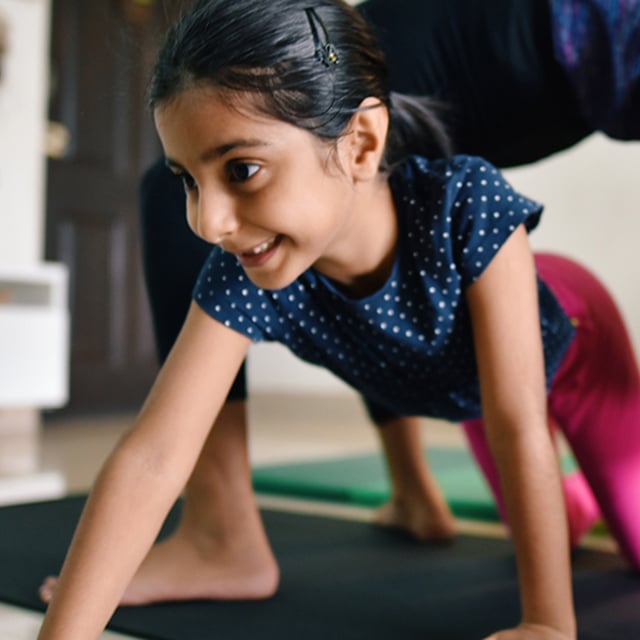Eligibility for vertebral body tethering
Vertebral body tethering is an option for children with scoliosis not linked to a neurological condition or injury. Ideal candidates have a spine curvature ranging between 40 degrees and 70 degrees. For curvature under 40 degrees, bracing or observation are the preferred treatments. Beyond 70 degrees, the screw-and-tether device may not be strong enough to correct the curve. In addition, the bigger the curve, the more growth is needed to correct it.
Tethering is limited to children who have bones strong enough to withstand the pull of the tether as the child grows. There's no set age range for this treatment. But because it relies on spinal growth, children younger than age 10 might risk overcorrection, while those over age 14 have likely already reached their mature height. You're most likely to see the greatest benefits of tethering within this age range.
Preparation for vertebral body tethering
Your child's doctor will order several tests before the surgery, including:
- X-rays. We use these to measure the degree of curvature in the spine. Images are taken while your child is both standing and lying down.
- Computed tomography (CT) scan with angiography. For this test, we inject a harmless dye into the bloodstream to collect detailed images of the blood vessels that supply blood to the spine. The surgeon will bypass any parts of the spine that have these vessels to ensure your child's safety during the operation.
- Magnetic resonance imaging (MRI). This type of scan allows us to examine the spinal cord and nerves of the spine in children younger than age 10. It is used for scoliosis patients in this age group because they sometimes have spinal nerve issues that make them ineligible for surgery. Your child must remain completely still for this test. If this is difficult for them, we may suggest sedation.
You and your child will also visit UCSF's Pediatric Pre-Surgery Clinic, to meet with your nurses and anesthesiologist. They may perform additional tests to make sure it's safe to go ahead with the surgery. The anesthesiologist will talk to you about anesthesia and pain management for during and after the procedure. They will also answer questions so you and your child are prepared.
If you live far from San Francisco, you and your child will be asked to come to UCSF several days ahead of the surgery. This allows time for a full evaluation, including imaging tests, and a visit to the Pre-Surgery Clinic.
Procedure for vertebral body tethering
Your child will be admitted to the hospital on the day of the operation. The surgery takes about six hours, and your child will be asleep the entire time. You will receive updates during the surgery from one of the operating room nurses.
After your child is given general anesthesia, the surgeon will make small incisions in either the side of the chest or the lower back to access the spine. The location of the incision depends on where the spine curves.
Guided by X-rays taken in the operating room, screws are placed along the outward-curving side of the spine. The screws used for vertebral tethering are coated with a special material that helps them lock into the bone. Once the screws are in place, the tether, which is made of strong polyester, is attached to them and tightened. A neural physiologist is present throughout the procedure to monitor the function of the nerves and spinal cord.
As your child grows, the tether slows the growth on the curved side of the spine but allows growth to continue on the other side. Over time, as your child's spine lengthens, the tension of the tether makes the spine straighter. The tether is taken out or replaced when scoliosis is fully corrected and there's a risk of the spine curving the other way. Another reason for tether removal or replacement is if the curve is getting worse, which indicates the device may be broken.
The screws don't ever need to be removed. They will remain in the spine, unnoticed, throughout your child's lifetime.
Recovery from vertebral body tethering
After the operation, your child will be admitted to our pediatric intensive care unit (ICU) for close monitoring. As parent or guardian, you can always stay with your child in the ICU.
Your child may have a chest tube, placed during surgery to prevent blood from filling the chest, as well as a catheter to drain their urine. Both of these devices will be removed within a day or two following the surgery.
Pain management for vertebral body tethering
Pain medications will be given by IV until your child is able to eat again. Then, your doctor will switch them to oral medications. Pain medications have side effects, including slowed breathing, dizziness, nausea and constipation.
These side effects can be more uncomfortable than the pain itself. The best way to manage these side effects is to use the minimum dose necessary to control the pain. It's unrealistic and unsafe to try to make the pain go away completely. This would require a very high dose, which would produce other, more severe issues.
Movement can help ease any discomfort caused by the side effects from the pain medications. The day after surgery, your child should be able to get out of bed and start walking with the help of a physical therapist.
At home care for vertebral body tethering
Most patients are discharged from the hospital two to four days after the operation. The length of stay depends primarily on your child's pain level and how comfortable you are caring for them at home. Before your child leaves the hospital, we will check the incision, change the dressing, remove any remaining tubes and catheters, and take X-rays to make sure the screws are stable.
Your child will return home with pain medications and, if needed, a custom brace to wear for three months. Once home, your child should be able to walk, climb stairs and perform most normal activities that don't involve excessive bending or twisting. It will be a week or so before the surgical incisions are healed enough that they can shower.
Follow-up after vertebral body tethering
Your child will return to UCSF a week after the operation for a follow-up visit. During this visit, the doctor will check the surgical wound. After this visit, as long as everything is progressing as it should, your child may shower.
Three months after the operation, we will take X-rays to assess the alignment. If your child needed a brace after their surgery, they can stop wearing it at this point.
Most children return to school one month after their operation, and to full normal activity after their three-month follow-up visit. We do not recommend restricting your child from any activity. However, it's important to follow the same safety and commonsense guidelines that apply to all kids.
Your child will return for annual or more frequent check-ups (according to their growth) until maturity. The goal of these visits is to monitor the curve while your child is still growing.
Patients who live far away should expect to stay in San Francisco through the first week after the operation. For long-term follow-up, we can arrange video appointments and to have X-rays taken by your local health care providers. Your local providers can upload the X-rays into MyChart for us to review.

































